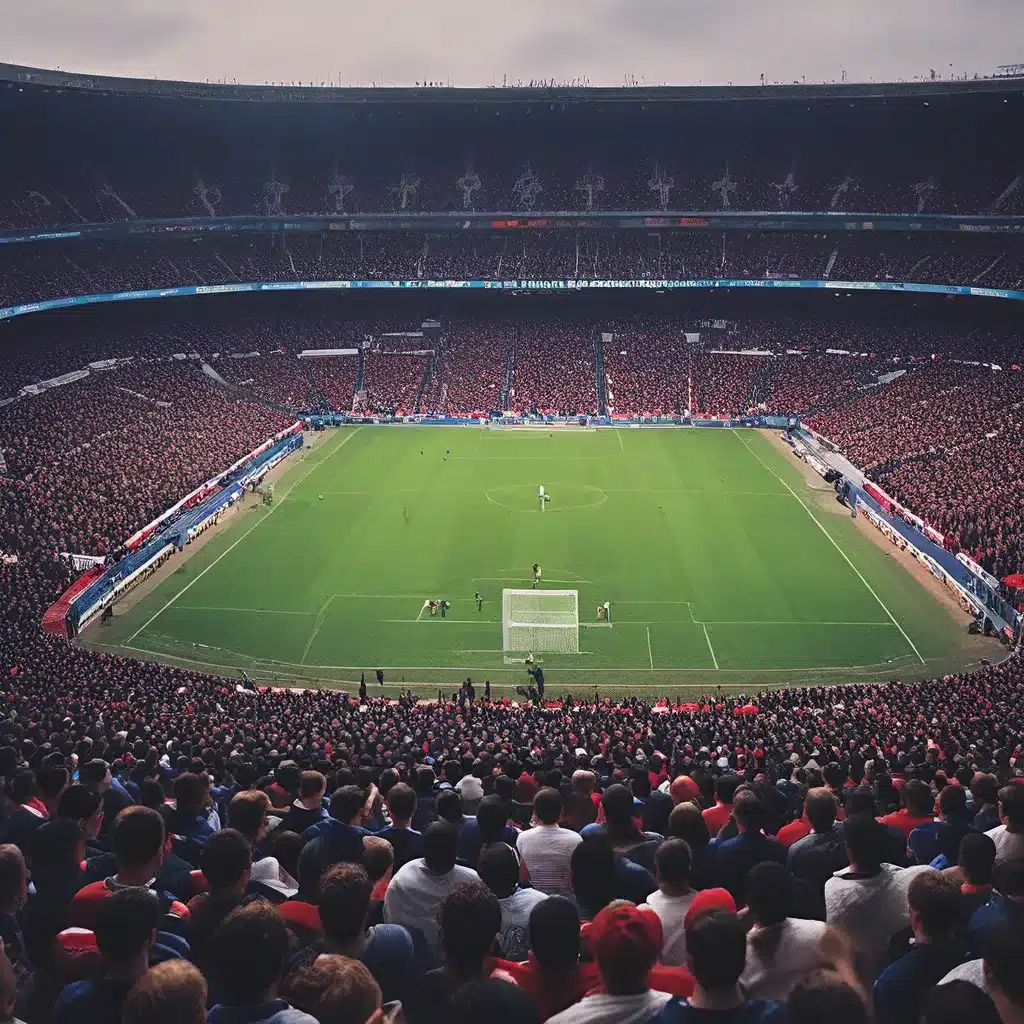
A Storied Stadium with a Rich History
The Parc des Princes, nestled in the heart of Paris, is a stadium that has borne witness to some of the most iconic moments in the annals of sports history. This hallowed ground has been the stage for electrifying football matches, thrilling rugby clashes, and unforgettable cultural events that have captivated audiences worldwide. As we delve into the rich tapestry of Parc des Princes’ past, we uncover a tale of resilience, triumph, and the enduring legacy of a true sporting institution.
The origins of Parc des Princes can be traced back to the late 19th century, when the stadium was first constructed in 1897 to serve as the home ground for the Paris Football Club. In those early days, the stadium’s capacity was a modest 3,000, but it quickly became a hub of sporting activity, hosting a variety of events ranging from football and rugby to horse racing and cycling. The iconic image of David Richards kicking ahead for Wales during the 1979 Five Nations Championship at Parc des Princes is a testament to the stadium’s long-standing association with the rugby union.
The Rise of Football and the Parc des Princes Legacy
As the 20th century progressed, the focus of Parc des Princes shifted increasingly towards football, reflecting the growing popularity of the sport in France. In 1932, the stadium underwent a major renovation, expanding its capacity to 45,000 and solidifying its status as one of the premier football venues in the country. This transformation coincided with the rise of Paris Saint-Germain Football Club, which would go on to become one of the most successful and recognizable teams in French football history.
The Parc des Princes has been the home ground of Paris Saint-Germain since 1974, and it has witnessed some of the club’s most iconic triumphs. From the early days of the club’s dominance in the 1980s to their current status as a powerhouse in European football, the Parc des Princes has been the epicenter of the team’s success. The stadium’s atmosphere, with its passionate and dedicated fan base, has been a crucial factor in driving the team’s performance on the pitch.
Iconic Matches and Memorable Moments
The Parc des Princes has played host to numerous unforgettable matches and events over the years, cementing its place as a revered and respected venue in the world of sports. In 1938, the stadium served as one of the venues for the FIFA World Cup, hosting several matches, including the quarterfinal between Italy and Brazil. The 1998 FIFA World Cup, held in France, also featured matches at the Parc des Princes, further solidifying its status as a global footballing destination.
Beyond football, the Parc des Princes has also been the stage for some of the most thrilling rugby union matches in history. In 1979, the stadium played host to a classic Five Nations Championship encounter between France and Wales, which saw Wales’ David Richards kick ahead in a moment of intense competition. The stadium’s rich rugby heritage is further exemplified by its role as a venue for the 2007 Rugby World Cup, where it witnessed some of the tournament’s most captivating matches.
The Parc des Princes has also been a hub for cultural events, serving as a venue for concerts by some of the world’s most renowned artists. From rock legends like The Rolling Stones to pop superstars like Madonna, the stadium has played host to a diverse array of musical performances, cementing its status as a multifunctional venue that caters to a wide range of interests.
Adapting to the Modern Era
As the world of sports and entertainment continues to evolve, the Parc des Princes has also had to adapt and modernize to meet the changing demands of its audience. In recent years, the stadium has undergone several renovations and upgrades, including the installation of state-of-the-art technology and the enhancement of the fan experience.
The introduction of video assistant referees (VAR) and goal-line technology at the Parc des Princes has helped to improve the accuracy and fairness of officiating decisions, ensuring that the stadium remains at the forefront of technological advancements in the world of football. Additionally, the stadium’s commitment to sustainability is evident in its efforts to reduce its carbon footprint and promote environmentally responsible practices.
As Paris Saint-Germain continues to solidify its status as one of the top clubs in Europe, the Parc des Princes has become a mecca for football enthusiasts from around the world. The stadium’s ability to attract some of the biggest names in the sport, from Lionel Messi to Kylian Mbappé, has only served to enhance its reputation as a world-class sporting venue.
Preserving the Legacy
Despite the changes and advancements that have occurred over the years, the Parc des Princes has managed to maintain its unique character and charm. The stadium’s iconic red and blue color scheme, which pays homage to the city of Paris, has become an integral part of its identity, and the stadium’s passionate fan base has remained a constant throughout its history.
The Parc des Princes’ legacy is not just about the countless victories and memorable moments that have taken place within its walls; it is also about the indelible impact it has had on the local community and the global sporting landscape. The stadium’s role as a hub for community engagement, through initiatives such as stadium tours and educational programs, has ensured that its significance extends far beyond the confines of the playing field.
As the Parc des Princes continues to write its history, it remains a testament to the enduring power of sports to bring people together, inspire greatness, and create lasting memories. Whether it’s the roar of the crowd during a nail-biting football match or the awe-inspiring performances of world-class athletes, the Parc des Princes will forever be etched in the hearts and minds of those who have had the privilege of experiencing its magic.

